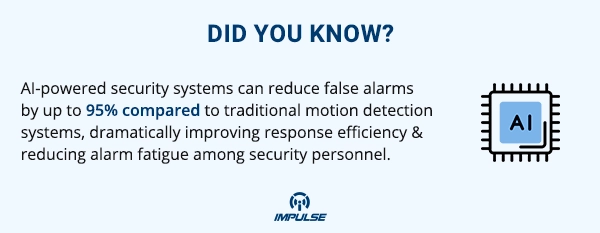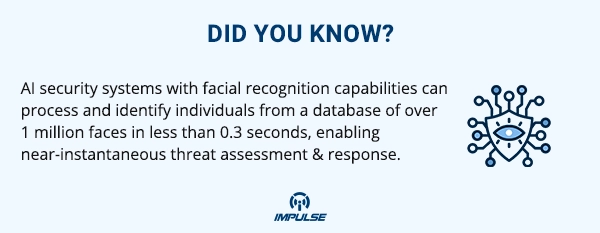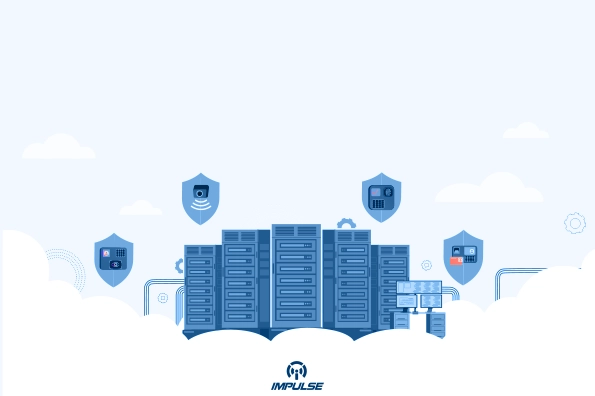Safety and security concerns have escalated dramatically across healthcare facilities, commercial buildings, and residential complexes. Traditional security measures often fail to provide adequate protection due to their reactive nature, limited monitoring capabilities, and reliance on human intervention. Healthcare settings in particular face unique challenges, with nurse call systems frequently hindered by delayed responses, limited staff availability, and the inability to prioritize emergencies effectively.
When medical emergencies occur, every second counts. The conventional approach to nurse call systems where patients press a button and wait for assistance creates significant vulnerabilities. Staff shortages, competing priorities, and lack of context about the nature of emergencies can result in delayed responses, potentially endangering patient lives. Additionally, the inability to detect falls, monitor vital signs remotely, or identify potentially dangerous situations before they escalate represents a critical gap in healthcare safety protocols.
Similar challenges exist across various sectors where conventional surveillance and security systems suffer from information overload, false alarms, and inability to proactively identify threats. These limitations highlight the urgent need for more intelligent, responsive, and automated security solutions.
The AI Revolution in Safety and Security
Artificial intelligence has emerged as the transformative technology addressing these critical challenges. AI-driven security systems represent a paradigm shift from reactive to proactive security protocols, fundamentally changing how safety measures are implemented across industries.

Understanding AI Appliances for Security
AI Appliances are specialized hardware devices equipped with artificial intelligence capabilities designed specifically for security and safety applications. Unlike traditional security equipment that merely collects data, these devices can analyze information, learn patterns, make decisions, and even predict potential security threats before they materialize.
At their core, AI-driven security systems incorporate:
- Advanced sensors for data collection (visual, audio, thermal, motion)
- Edge computing architecture for real-time processing
- Machine learning algorithms for pattern recognition and anomaly detection
- Neural networks for complex decision making
- Computer vision technology for visual analysis and identification
- Natural language processing for audio monitoring and communication
The primary advantage of modern AI Appliances is their ability to process information directly on the device (edge computing) rather than relying entirely on cloud processing, resulting in faster response times, improved privacy, and continued functionality even during network interruptions.
How AI-Powered Surveillance Transforms Security Operations
The integration of artificial intelligence into security surveillance creates multiple layers of enhanced protection:
1. Intelligent Video Analytics
AI-powered CCTV cameras transcend the limitations of traditional surveillance by actively analyzing visual data rather than simply recording it. These systems can:
- Detect unusual behavior patterns that might indicate security threats
- Identify specific individuals through facial recognition technology
- Recognize objects including weapons, abandoned packages, or suspicious items
- Monitor restricted areas and generate alerts upon unauthorized access
- Track movement patterns across multiple cameras seamlessly
- Count and analyze people flow for occupancy management and optimization
2. Predictive Security Measures
Perhaps the most revolutionary aspect of AI in safety and security is the shift toward predictive capabilities:
- Behavioral analysis to identify potentially threatening conduct before incidents occur
- Pattern recognition to detect deviations from normal operations
- Temporal anomaly detection to flag unusual timing of activities
- Predictive maintenance for security equipment to prevent system failures
- Risk scoring of identified threats to prioritize responses
3. Enhanced Response Coordination
When security incidents do occur, AI systems significantly improve response effectiveness:
- Automated alert verification to reduce false alarms
- Intelligent dispatch directing security personnel to exact locations
- Real-time information sharing with emergency responders
- Dynamic response recommendations based on threat assessment
- Autonomous initiation of lockdown or containment measures when necessary
The AI Video Analysis Box: Next-Generation AI Security Appliance
At the forefront of AI-based threat detection technology is the AI Video Analysis Box from Impulse CCTV, an advanced AI Appliance designed to transform security operations across multiple sectors. This device exemplifies how artificial intelligence can be practically deployed to address critical security challenges.
Technical Specifications and Capabilities
The AI Video Analysis Box represents a significant advancement in security technology with several key technical features:
- ARM Architecture: Built on efficient ARM processors that minimize power consumption to less than 30W for the entire system
- Processing Power: Capable of handling up to 16 channels of simultaneous video analysis
- Advanced Analytics: Supports multiple AI functions including facial recognition, passenger flow analysis, full target structuring, and intelligent video analysis
- Flexible Integration: Compatible with multiple protocols (including RTSP) and provides API interfaces for third-party platform integration
- Deployment Efficiency: Designed for lightweight, flexible implementation across various environmental contexts
Practical Applications in Healthcare Settings
For healthcare facilities struggling with nurse call system limitations, the AI Video Analysis Box provides revolutionary capabilities:
- Patient Monitoring: Continuous analysis of patient movements to detect falls or distress without requiring button activation
- Automated Prioritization: AI algorithms that can distinguish between routine requests and emergency situations
- Staff Efficiency: Intelligent routing of alerts to the nearest available staff member based on real-time location tracking
- Behavioral Analysis: Learning normal patient behavior patterns to detect potential health issues before they become emergencies
- Integration: Seamless connection with existing nurse call infrastructure to enhance rather than replace current systems
Beyond Healthcare: Multi-Sector Applications
The versatility of AI-powered surveillance extends far beyond healthcare settings:
- Commercial Facilities: Protection against theft, unauthorized access, and workplace safety hazards
- Educational Institutions: Enhancing campus security while respecting privacy concerns
- Retail Environments: Preventing theft while gaining valuable customer insights
- Industrial Settings: Ensuring compliance with safety protocols and detecting operational anomalies
- Public Infrastructure: Protecting critical assets and detecting suspicious behavior patterns

The Technical Architecture of AI-Driven Security
1. Multi-Layer Neural Networks
Modern AI appliances like the AI Video Analysis Box employ sophisticated neural networks with multiple specialized layers:
- Convolutional Neural Networks (CNNs) for image analysis and recognition
- Recurrent Neural Networks (RNNs) for analyzing sequential data and behavior patterns
- Generative Adversarial Networks (GANs) for distinguishing between normal and anomalous patterns
- Deep Reinforcement Learning for optimizing security responses based on outcomes
These networks continuously improve through machine learning, becoming more accurate and effective over time as they process more data.
2. Edge Computing Architecture
The edge-based processing capability of smart security appliances with AI addresses several critical requirements:
- Latency Reduction: Processing data locally eliminates transmission delays for time-critical functions
- Bandwidth Conservation: Only relevant data is transmitted to central systems
- Privacy Enhancement: Sensitive information can be processed without leaving the device
- Reliability: Continued functionality during network outages or disruptions
- Scalability: Distributed processing enables system expansion without overtaxing central resources
3. Hardware Acceleration
AI security appliances incorporate specialized hardware components to optimize AI processing:
- Neural Processing Units (NPUs) dedicated to AI calculations
- Field-Programmable Gate Arrays (FPGAs) for customizable hardware acceleration
- Graphics Processing Units (GPUs) for parallel processing of visual data
- Tensor Processing Units (TPUs) optimized for machine learning operations
This hardware specialization enables real-time processing of complex AI algorithms without excessive power consumption a critical advantage of the AI Video Analysis Box with its efficient 30W operation.
Implementation Challenges and Solutions
While AI-driven security systems offer tremendous advantages, successful implementation requires addressing several key challenges:
1. Data Privacy and Ethical Considerations
AI security systems must carefully balance effectiveness with privacy protection through several key measures. These include implementing anonymization techniques that process identifying information while maintaining privacy, managing consent to ensure proper permissions for data collection, and limiting data use to specific security functions. Additionally, these systems follow data minimization principles by collecting only essential information, while maintaining transparency through clear communication about the AI system’s capabilities and limitations.
2. Integration with Legacy Systems
Many facilities face the challenge of integrating new AI capabilities with their existing security infrastructure. To address this, organizations implement protocol adapters that enable communication between different system generations, middleware solutions that bridge incompatible technologies, and phased implementation approaches that gradually enhance capabilities while maintaining operations. API interfaces allow for programmatic interaction between systems, and the AI Video Analysis Box specifically addresses these integration challenges through its rich interface options and third-party platform docking capabilities.
3. Technical Expertise Requirements
Operating advanced AI security systems requires specialized knowledge, but several solutions help address this challenge. Organizations can implement simplified user interfaces that make complex technology accessible to security personnel, while automated optimization through self-tuning algorithms reduces the need for manual configuration. When additional support is needed, remote expert assistance is available, and comprehensive training programs help develop internal expertise for effective system management.
The Future of AI in Safety and Security
The evolution of AI-driven security technology continues to accelerate, with several emerging trends poised to further transform the landscape:
1. Multimodal AI Analysis
Next-generation security systems will integrate multiple data types for comprehensive threat assessment, creating a more robust and accurate security framework:
- Combined Visual-Audio Analysis: Correlating unusual sounds with visual anomalies to detect potential threats that might be missed by single-mode systems. For example, detecting breaking glass sounds combined with motion detection can provide stronger evidence of a break-in attempt.
- Thermal-Optical Fusion: Integrating thermal imaging with traditional video enables 24/7 surveillance capabilities and improved detection accuracy, particularly useful in low-light conditions or through visual obstacles like smoke or fog.
- Environmental Context: Incorporating weather, time, and other contextual factors to reduce false alarms and provide more accurate threat assessments. This includes adjusting sensitivity based on weather conditions and typical activity patterns for different times of day.
- Multi-Sensor Arrays: Creating rich data environments for more accurate assessment by combining inputs from motion sensors, pressure plates, infrared detectors, and other environmental monitoring devices.
2. Autonomous Security Response
The progression from detection to autonomous response represents the next frontier in security technology, offering faster and more effective threat management:
- Security Drones: AI-directed aerial surveillance and response capabilities, including automated perimeter patrols, incident investigation, and real-time video feeds to security personnel. These drones can rapidly deploy to investigate alerts and provide immediate situational awareness.
- Robotic Security Patrols: Physical presence guided by artificial intelligence, capable of conducting regular security rounds, identifying anomalies, and responding to security events. These robots can operate continuously without fatigue and maintain consistent patrol patterns.
- Automated Mitigation: Systems that can implement countermeasures without human intervention, such as automatically securing access points, triggering emergency protocols, or initiating evacuation procedures based on detected threats.
- Dynamic Security Protocols: Self-adjusting security parameters based on threat assessment, including automatically updating access controls, adjusting surveillance coverage, and modifying response protocols based on real-time risk analysis.
3. Federated AI Learning
Security AI systems will increasingly learn collaboratively while preserving data privacy, creating a network of intelligent security systems that continuously improve:
- Distributed Model Training: Improving AI capabilities across multiple installations while maintaining local data sovereignty. This allows systems to learn from diverse scenarios without compromising sensitive information.
- Threat Intelligence Sharing: Learning from security incidents across facilities to build a comprehensive threat database that helps predict and prevent future security breaches. This includes pattern recognition across different locations and facility types.
- Privacy-Preserving Collaboration: Sharing insights without exposing sensitive data through advanced encryption and anonymization techniques. This enables facilities to benefit from collective learning while maintaining strict privacy standards.
- Industry-Specific Learning: Developing specialized capabilities for different sectors, with AI models trained on industry-specific scenarios and requirements. This ensures that security systems are optimized for particular environments, whether healthcare, retail, or industrial settings.
Conclusion
The limitations of traditional security approaches including conventional nurse call systems have created vulnerabilities that can no longer be ignored. AI-driven appliances provide the technological solution to these challenges, offering unprecedented capabilities for threat detection, emergency response, and proactive security management.
Systems like the AI Video Analysis Box represent the leading edge of this technological revolution, delivering powerful AI capabilities in efficient, flexible packages that can be deployed across diverse environments. The transition to AI-powered surveillance and security is not merely an enhancement of existing approaches but a fundamental transformation in how safety is conceptualized and implemented.
Organizations that embrace these technologies gain not only improved security effectiveness but also operational efficiencies, enhanced data insights, and adaptability to evolving threats. As artificial intelligence continues to advance, the capabilities of these systems will expand further, creating even more sophisticated and effective security ecosystems.
Impulse CCTV specializes in advanced AI-driven security solutions tailored to your specific operational needs. Our team of experts can assess your current security vulnerabilities and design an integrated system incorporating cutting-edge technology like the AI Video Analysis Box.


